The Fathers of the Church: Mediaeval Continuation (15 vols.)
Digital Verbum Edition
Overview
Neglected for years as a stagnant period in philosophy and theology, recent scholarship has revealed the Middle Ages to be as intellectually dynamic as any. Covering the most significant Christian writers from the eleventh to the fourteenth centuries, this collection provides insight into the development of Scholasticism, various heresies and ecclesiastical issues, and the complexities of emerging ethnocentrism. Among the included works are Aquinas’ academic sermons, Heinrich Seuse’s Wisdom’s Watch upon the Hours and Jon Duns Scotus Questions on Aristotle’s Categories. These volumes will fill the gap in medieval scholarship that exists in many libraries, providing valuable insight into Christianity’s continued development and massive influence in European history.
With Verbum Catholic Software, these valuable volumes are enhanced by cutting-edge research tools. Scripture citations link directly to English translations, and important terms link to dictionaries, encyclopedias, and a wealth of other resources in your digital library. Powerful searches help you find exactly what you’re looking for. Tablet and mobile apps let you take the discussion with you. With Verbum Catholic Software, the most efficient and comprehensive research tools are in one place, so you get the most out of your study.
Key Features
- Provides contemporary scholarship on an often neglected period
- Explores Christianity’s continued development and influence in the High Middle Ages
- Examines the complex beginning of ethnocentrism in Europe
Product Details
- Title: The Fathers of the Church: Mediaeval Continuation
- Publisher: Catholic University of America
- Volumes: 15
- Pages: 5,164
- Christian Group: Catholic
- Resource Type: Collected Works
- Topic: Theology
Individual Titles
- The Letters of Peter Damian: 1–30
- The Letters of Peter Damian: 31–60
- The Letters of Peter Damian: 61–90
- The Letters of Peter Damian: 91–120
- The Letters of Peter Damian: 121–150
- The Letters of Peter Damian: 151–180
- Wisdom’s Watch upon the Hours by Heinrich Seuse
- Dialogue against the Jews by Petrus Alfonsi
- Questions concerning Aristotle’s On Animals by Albert the Great
- On the Body and Blood of the Lord and On the Truth of the Body and Blood of Christ in the Eucharist by Lanfranc of Canterbury and Guitmund of Aversa
- The Academic Sermons by Thomas Aquinas
- Commentary on the Epistle to the Romans by Peter Abelard
- On the Cessation of the Laws by Robert Grosseteste
- Against the Inveterate Obduracy of the Jews by Peter the Venerable
- Questions on Aristotle’s Categories by John Duns Scotus

This first volume of the Letters of Peter Damian contains the first 30 letters, and covers the period before 1049. Here we see Peter Damian as an untiring preacher and uncompromising reformer, both of the monastic world and of the church at large. He attacks clerical laxity and monastic decadence in letter after letter. The first letter in the collection is of particular interest, containing a theological consideration of the Christian position against the Jews. Other important letters in this first volume are Damian’s allegorical interpretation of the Divine Office, his letters on the Last Days and the Judgment, on canonical and legal points (such as the prohibited degrees of consanguinity in marriage), and on liturgical matters, particularly in monastic observance.
Peter Damian (1007–1072), an eleventh-century monk and man of letters, left a large and significant body of correspondence. Over 180 letters have been preserved, principally from Damian’s own monastery of Fonte Avellana. Ranging in length from short memoranda to longer monographs, the letters provide a contemporary account of many of the controversies of the eleventh century: purgatory, the Eucharist, clerical marriage and celibacy, immorality, and others. Peter Damian, or “Peter the Sinner” as he often referred to himself, was one of the most learned men of his day, and his letters are filled with both erudition and zeal for reform.
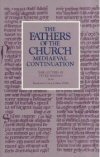
This second volumes of the Mediaeval Continuation contains Letters 31–60 of Peter Damian. While his epistolary style is varied—exhortatory, occasional, pastoral, reforming—his message is singular and simple in urging strict adherence to the canons of the Church.
Letters 31 and 40 are long treatises, each published separately in critical editions. Letter 31, also known as the Book of Gomorrah, deplores the degradation of the priesthood through the vice of sodomy and appeals to Pope Leo IX to educate and purge the clergy. Letter 40, perhaps his most celebrated work, is also called the Liber Gratissimus.
Among the more personal letters are 55 and 57. In the former he writes of a long, debilitating illness, so serious that funeral preparations had been made, and of his immediate recovery when his brethren gave food to one hundred poor people. In the latter, he begs to be relieved of the administration of the diocese of Gubbio because of ill health, so that he may return to Fonte Avellana and his “beloved solitude.”
Letter 58, to Henry the archbishop of Ravenna in 1058, is the best example in the collection of Peter Damian’s political and ecclesiastical influence. In it he gives his opinion of Benedict X and Nicholas II, the two candidates for the Apostolic See. He makes no effort to conceal his strong opinions but rather requests that this letter be made public so that all may learn what he has thought about the subject.
Peter Damian (1007–1072), an eleventh-century monk and man of letters, left a large and significant body of correspondence. Over 180 letters have been preserved, principally from Damian’s own monastery of Fonte Avellana. Ranging in length from short memoranda to longer monographs, the letters provide a contemporary account of many of the controversies of the eleventh century: purgatory, the Eucharist, clerical marriage and celibacy, immorality, and others. Peter Damian, or “Peter the Sinner” as he often referred to himself, was one of the most learned men of his day, and his letters are filled with both erudition and zeal for reform.
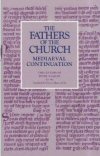
This third volume of The Letters of Peter Damian is a careful, fluent, and annotated translation of Letters 61–90. These letters reveal the author’s concern with the contemporary need for reforms, centering on clerical, especially episcopal, celibacy and on the “heresy” of simony which involved the purchase of ecclesiastical offices. In Letter 89, for example, Damian addresses the Selvismatic attempt of antipope Honorius II (Cadalus of Parma) to circumvent the election of Alexander II by the newly organized college of cardinal bishops. Also, among the letters here presented are several of a highly spiritual, even mystical content. These letters demonstrate that this active reformer was at heart a solitary soul who, when away from home, longed for his “beloved solitude,” where he could practice the contemplative life. Eventually, Damian grew weary of his efforts at reform and asked to be retired from his office of cardinal bishop of Ostia.
Because Damian’s Latin was a living language that surpasses the ability of classical Latin lexicography to cope with it, all disciplines that make use of medieval thought will welcome this English translation. Owen J. Blum’s thorough notes to each letter indicate the vocabulary problems he encountered and how they were resolved. This third volume, like its companions, uses Damian's thought to understand an important and gripping period in the history of church and state. With these intimate revelations into his character and motivation, readers may more readily appreciate Damian's total dedication to his mission.
Peter Damian (1007–1072), an eleventh-century monk and man of letters, left a large and significant body of correspondence. Over 180 letters have been preserved, principally from Damian’s own monastery of Fonte Avellana. Ranging in length from short memoranda to longer monographs, the letters provide a contemporary account of many of the controversies of the eleventh century: purgatory, the Eucharist, clerical marriage and celibacy, immorality, and others. Peter Damian, or “Peter the Sinner” as he often referred to himself, was one of the most learned men of his day, and his letters are filled with both erudition and zeal for reform.
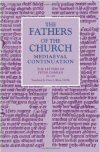
Written during the years 1062–1066, these letters deal with a wide variety of subjects. Some letters are of historical interest, others approach the size and scope of philosophical or theological treatises. Damian’s correspondents range from simple hermits in his community to abbots, bishops, cardinals, and even to Pope Alexander II. Among these letters are to be found one addressed to the patriarch of Constantinople, two to Damian’s sisters, one to the Empress Agnes, and even a few to such distant personages as the young King Henry IV and the Archbishop Anno of Cologne.
Like its companions, this volume uses Damian’s thought to understand an important and gripping period in the history of church and state. Clearly, the most significant letter in this collection is Letter 119, written in 1063 to Abbot Desiderius of Monte Cassino and his monks, on the omnipotence of God. Translated here for the first time into English, Damian’s treatise on divine omnipotence demonstrates his control of both theological and philosophical methodology. His opponents are contemporary rhetoricians whose denial of God’s total potency in dealing with his creatures’ contingencies in time past, present, and future opens them to the charge of heresy.
Though Damian’s vocabulary frequently challenges the combined dictionary resources of classical, patristic, and mediaeval Latin, Owen J. Blum’s careful translation will guarantee the transmission of Damian's thought to all levels of readers throughout the world.
Father Blum’s translations are scholarly and accurate. They read well, and his lifetime of familiarity with Peter Damian’s writings ensures that he catches the spirit and feeling of the author’s skillful and sophisticated Latin. Teachers and students alike will be grateful for the availability in English translation of this corpus of letters which is a major source both for the history of the reform papacy and for that of the Italian peninsula in the mid-eleventh century.
—The Catholic Historical Review
Peter Damian (1007–1072), an eleventh-century monk and man of letters, left a large and significant body of correspondence. Over 180 letters have been preserved, principally from Damian’s own monastery of Fonte Avellana. Ranging in length from short memoranda to longer monographs, the letters provide a contemporary account of many of the controversies of the eleventh century: purgatory, the Eucharist, clerical marriage and celibacy, immorality, and others. Peter Damian, or “Peter the Sinner” as he often referred to himself, was one of the most learned men of his day, and his letters are filled with both erudition and zeal for reform.

This volume, the fifth in the series of volumes containing the 180 letters written by the eleventh-century monk Peter Damian, contains careful and annotated translations of Damian’s Letters 121–150. Written during the years 1062–66, the letters deal with a wide variety of subjects and provide a contemporary account of many of the controversies of the gripping period in the history of church and state.
While previous volumes have included Damian’s correspondence to a range of people from simple hermits in his community to abbots, bishops, cardinals, Pope Alexander II, and young King Henry IV, this collection of letters includes several addressed to kinsmen. Letter 123 is Damian’s rather lengthy exhortation to his nephew Damianus encouraging him to seek a pure and virtuous monastic life. Letter 132, written to his nephew Marinus, contains a comprehensive discussion of the virtues proper to the monastic life. And Letter 126 to Alberic of Monte Cassino, presents a good example of Damian’s principles of biblical exegesis.
This well-written and well-presented collection . . . highlights the gravity and the importance of [Peter Damian’s] counsel to addresses far and wide, and it brings to the fore contemporaneous issues for both Church and State.
—Dianne M. Cole, Laval Theologique et Philosophique
Peter Damian (1007–1072), an eleventh-century monk and man of letters, left a large and significant body of correspondence. Over 180 letters have been preserved, principally from Damian’s own monastery of Fonte Avellana. Ranging in length from short memoranda to longer monographs, the letters provide a contemporary account of many of the controversies of the eleventh century: purgatory, the Eucharist, clerical marriage and celibacy, immorality, and others. Peter Damian, or “Peter the Sinner” as he often referred to himself, was one of the most learned men of his day, and his letters are filled with both erudition and zeal for reform.
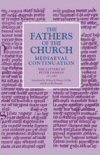
This volume concludes the series of Peter Damian’s letters in English translation. Among Letters 151–180 readers will find some of Damian’s most passionate exhortations on behalf of eremitic ideals. These include Letter 152, in which Damian defends as consistent with the spirit and the letter of Benedict’s Rule his practice of receiving into the eremitic life monks who had abandoned their cenobitic communities. In Letter 153 Damian encourages monks at Pomposa to pass beyond the minimum standards established in the Rule of St. Benedict for the higher and more demanding eremitic vocation. In Letter 165, addressed to a hermit, Albizo, and a monk, Peter, Damian reveals as well the importance of monastic life to the world: because the integrity of the monastic profession has weakened, the world has fallen even deeper into an abyss of sin and corruption and is rushing headlong to destruction. Let monks and hermits take refuge within the walls of the monastery, he urges, while outside the advent of Antichrist seems imminent. Only from within their walls can they project proper examples of piety and sanctity that may transform the world as a whole.
Damian was equally concerned to address the moral condition of the larger Church. Letter 162 represents the last of Damian’s four tracts condemning clerical marriage (Nicolaitism). Damian’s condemnation of Nicolaitism also informed his rejection of Cadalus, the antipope Honorius II (Letters 154 and 156), who was said to support clerical marriage, and therefore cast him into the center of a storm of ecclesiastical (and imperial) politics from which Damian never completely extricated himself.
Teachers and students alike will be grateful for the availability in English translation of this corpus of letters which is a major source both for the history of the reform papacy and for that of the Italian peninsula in the mid-eleventh century.
—Catholic History Review
Peter Damian (1007–1072), an eleventh-century monk and man of letters, left a large and significant body of correspondence. Over 180 letters have been preserved, principally from Damian’s own monastery of Fonte Avellana. Ranging in length from short memoranda to longer monographs, the letters provide a contemporary account of many of the controversies of the eleventh century: purgatory, the Eucharist, clerical marriage and celibacy, immorality, and others. Peter Damian, or “Peter the Sinner” as he often referred to himself, was one of the most learned men of his day, and his letters are filled with both erudition and zeal for reform.
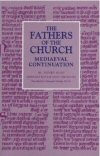
Written by Dominican preacher and mystic Heinrich Seuse (1300–1366), Horologium Sapientiae, or Wisdom’s Watch upon the Hours, was one of the most successful religious writings of its time. Essentially a dialogue between the author and Divine Wisdom, the Watch tells of Seuse’s service to and espousal of Wisdom, his “most cruel bride,” with a charm reminiscent of contemporary chivalric romance literature. The Watch’s many readers doubtless esteemed it for its devotional fervor and for the solutions Seuse offers to the problems inseparable from a sincere Christian life. He teaches that a devotion of sharing in the Savior’s self-sacrifice is the path to spiritual perfection, as well as a consolation for the soul amid life’s cares.
Seuse keenly observes and judiciously criticizes the abuses of his own times and the rise of secularism, hedonism, and materialism. He writes of his yearning for a way of life that was fast disappearing, for the piety and simplicity of the country folk he had known as a boy. For Seuse, the “Christocentric Boethius,” the men and women of his youth were heirs of the Eternal Wisdom, founded on Christ and found in Christ, which was being lost and forgotten in the new urban cultures.
Henrich Seuse (1300-1366), was a German Dominican friary and a noted spiritual writer and mystic.
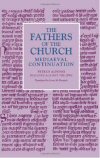
Petrus Alfonsi’s Dialogue against the Jews (ca. 1109) breaks new ground in the history of Christian anti-Jewish polemics. As a recent convert from Judaism, Alfonsi introduced an intimate knowledge of Jewish literature and contemporary practice absent from earlier Christian sources. This knowledge enabled him to attack for the first time the Talmud as a source of Jewish error, with arguments drawn from philosophy and theology, astronomy, medicine, and physics. Equally important, Alfonsi’s Dialogue contains an extensive anti-Muslim polemic to explain not only why he abandoned Judaism but also why he rejected Islam and chose the Christian faith.
For these reasons the Dialogue has been described as the most important anti-Jewish text of the Latin Middle Ages. This assessment is based not only on its innovative argumentation but also on the fact that it was one of the most popular medieval anti-Jewish polemics written. This work presents to the reader perhaps the most important source for an intensifying medieval Christian-Jewish debate.
Petrus Alfonsi was Jewish Spanish physician, astronomer, and writer, who converted to Christianity.
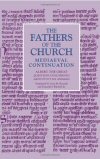
Albert the Great is one of only a very few scholastics to comment on the entire collection of Aristotle’s biological works. This text, recovered only at the beginning of the twentieth century and never before translated in its entirety, represents Conrad of Austria’s report on a series of disputed questions that Albert the Great addressed in Cologne ca. 1258. Here, Albert adduces his own views—often criticizing other medieval physicians and natural philosophers—on comparative anatomy, human physiology, sexuality, procreation, and embryology. This translation, based on the critical edition that appeared in the Cologne edition of Albert's work, helps to explain the title “patron saint of scientists,” bestowed upon Albert by Pope Pius XII.
Albert the Great was a German Dominican friar and a Catholic bishop. He is often regarded as the greatest German philosopher and theologian of the Middle Ages and is honored by the Catholic Church as one of 35 Doctors of the Church.
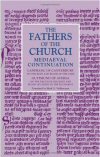
On the Body and Blood of the Lord and On the Truth of the Body and Blood of Christ in the Eucharist
- Authors: Lanfranc of Canterbury and Guitmund of Aversa
- Translator: Mark G. Vallaincourt
- Series: Fathers of the Church: Mediaeval Continuation
- Publisher: Catholic University of America
- Publication Date: 2009
- Pages: 227
The eucharistic crisis of the eleventh century posed the greatest challenge to the Church’s understanding of the Real Presence of Christ in the Blessed Sacrament until the Reformation. The eucharistic symbolism of Berengarius of Tours, which was at the heart of the controversy, was challenged first by Lanfranc of Canterbury and then by his student Guitmund of Aversa. Both authors countered with a vigorous defense of the Church's traditional belief that the body of Christ in the Eucharist is the same body that was born of the Virgin Mary, now risen and in glory.
In this first English translation of Lanfranc’s On the Body and Blood of the Lord, the reader learns firsthand both the history of the crisis and the doctrinal issues in question. Lesser known than Lanfranc’s work, but of greater doctrinal significance, is Guitmund’s On the Truth of the Body and Blood of Christ in the Eucharist. In Guitmund’s work, one finds a treatment of the doctrinal issues involved that is not only more systematic than that of Lanfranc, but far more speculative in character, and one that presents a fascinating vision of the Eucharist as a continuation of Christ’s Easter appearances.
The translations of both Lanfranc’s and Guitmund’s works, along with extensive commentary and notes, make this volume of the Mediaeval Continuation of the Fathers of the Church series an important study in the history of the development of eucharistic theology.
Lanfranc of Canterbury (1005–1089), Italian by birth and formerly a French Benedictine monk, was Archbishop of Canterbury.
Guitmund of Aversa was an eleventh century Benedictine monk and Bishop of Aversa.
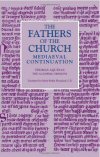
The philosophical and theological works of St. Thomas Aquinas are held in universal esteem. His commentaries on Scripture and the role of Scripture in his theological works have garnered considerable attention. Yet Aquinas’ academic sermons delivered on Sundays and special occasions have been widely overlooked.
Though hundreds of medieval sermons are attributed to Thomas Aquinas, the Leonine Commission has identified only 20 as his. This book features all 20 sermons, and one whose authenticity has been debated, translated from the original Latin texts, five of which have never been published before. An introduction and notes accompany the first-ever English translation. The Academic Sermons will fascinate readers as it presents Thomas’ unique style of preaching and how he skillfully communicated the fruits of his contemplation. With this book, Thomas the preacher comes to the fore.
Thomas Aquinas (1225–1274) entered the Benedictine abbey of Montecassino at the age of five to begin his studies. He was transferred to the University of Naples at age 16, where he became acquainted with the revival of Aristotle and the Order of the Dominicans. Aquinas went on to study in Cologne in 1244 and Paris in 1245. He then returned to Cologne in 1248, where he became a lecturer.
Aquinas’s career as a theologian took him all over Europe. In addition to regularly lecturing and teaching in cities throughout Europe, Aquinas participated regularly in public life and advised both kings and popes. Thomas Aquinas also profoundly influenced the history of Protestantism. He wrote prolifically on the relationship between faith and reason, as well as the theological and philosophical issues which defined the Reformation.
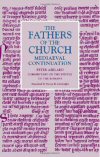
Peter Abelard wrote his Commentary on the Epistle to the Romans in the mid-twelfth century, toward the end of his life, while teaching in Paris. Filled with questions on topics such as redemption, grace, and original sin, the commentary demonstrates the growing interest of urban scholars in applying dialectic to the study of Sacred Scripture. Abelard’s analysis of some of these topics contributed to his second condemnation at the Council of Sens in 1140.
Despite its importance and the frequent references made to it by modern scholars, this commentary has never before been translated into English in its entirety. This volume, which includes an extensive introduction, fills this gap, thus providing a needed contribution to medieval scholarship.
Peter Abelard (1079–1142) was a medieval French scholastic philosopher, theologian, and logician. Chambers Biographical Dictionary describes him as “the keenest thinker and boldest theologian of the twelfth century.”
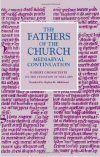
On the Cessation of the Laws directly reflects the profundity and originality of Grosseteste’s theological work and indirectly reveals his pastoral concerns. The work consists of four books. In the first, Grosseteste offers arguments mostly from Scripture against the position that he wishes to defend and then counters these arguments with a lengthy treatment of the whole economy of creation and salvation and the place of the Scriptures. The second attempts to show from clear Old Testament texts that the crucified Jesus was the savior promised in the Law. The third is dominated by theological arguments for the incarnation of Christ even if humanity had not sinned, and the fourth addresses a cluster of questions that follow upon the death of the Law.
In On the Cessation of the Laws, Grosseteste draws out the theological, Christological, and soteriological issues implicit in the question of the relationship between the Old and New Covenants.
Robert Grosseteste (1175–1253) was an English statesman, scholastic philosopher, theologian, scientist, and bishop of Lincoln. A.C. Crombie called Grosseteste “the real founder of the tradition of scientific thought in medieval Oxford, and in some ways, of the modern English intellectual tradition.”

Against the Inveterate Obduracy of the Jews represents a turning point in medieval anti-Jewish polemics. On the one hand, the polemic’s intention—to bring about the conversion of the Jews—is predicated on an assumption that Jews are rational agents who may be persuaded of Christian truths by philosophical argument, empirical evidence, and biblical exegesis. On the other hand, Peter the Venerable also introduced the notion that the Jews’ enduring “blindness” stems from a persistent strain of irrationality, for which they themselves are responsible. Peter traces this irrationality to the medieval Jews’ commitment to the Talmud.
Peter is the first medieval Christian author to name the Talmud explicitly. The Jewish convert to Christianity, Petrus Alfonsi, had ridiculed Talmudic folklore in his Dialogue against the Jews. Peter the Venerable borrowed from but also surpassed Alfonsi’s critique, as even his use of the name Talmud indicates. Unfortunately, by emphasizing the irrationality of the Jews, Peter cast doubt upon their essential humanity and paved the way toward an increasingly violent treatment of the Jewish minority in medieval Christendom.
Peter the Venerable (1092–1156) was abbot of the Benedictine abbey of Cluny. He was born to Blessed Raingarde in Auvergne, France and has been honored as a saint, but was never fully canonized.
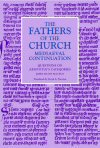
Questions on Aristotle’s Categories
- Author: John Duns Scotus
- Translator: Lloyd A. Newton
- Series: Fathers of the Church: Mediaeval Continuation
- Publisher: Catholic University of America
- Publication Date: 2014
- Pages: 352
This work is the first English translation of Scotus’ commentary on Aristotle’s Quaestiones super Praedicamenta. Although there are numerous Latin commentaries on Aristotle’s Categories, Scotus’ Questions is one of the few commentaries on the Categories written in the thirteenth century covering all of Aristotle’s text, including the often neglected post-praedicamenta, and the only complete Latin commentary available in English. Moreover, unlike many of the commentaries, Scotus’ text is one of the last commentaries to be written before the nominalist reduction of the categories to substance and quality. The question format allows Scotus a great deal of liberty to discuss the categories in detail, as well as matters that are only remotely raised by the text.
John Duns Scotus (1266–1308) was one of the most influential philosopher-theologians of the High Middle Ages. His thought, include the doctrine of “univocity of being,” have had considerable influence on both Christian and secular thought.
Key Features
- Provides contemporary scholarship on an often neglected period
- Explores Christianity’s continued development and influence in the High Middle Ages
- Examines the complex beginning of ethnocentrism in Europe
Product Details
- Title: The Fathers of the Church: Mediaeval Continuation
- Publisher: Catholic University of America
- Volumes: 15
- Pages: 5,164
- Christian Group: Catholic
- Resource Type: Collected Works
- Topic: Theology
Reviews
1 rating

Dale Durnell, Retired UM Clergy
10/4/2024
Fortunately, I bought this when it was spelled "Midieval" 😃😅😂🤣
Ralph A. Abernethy III
9/7/2017